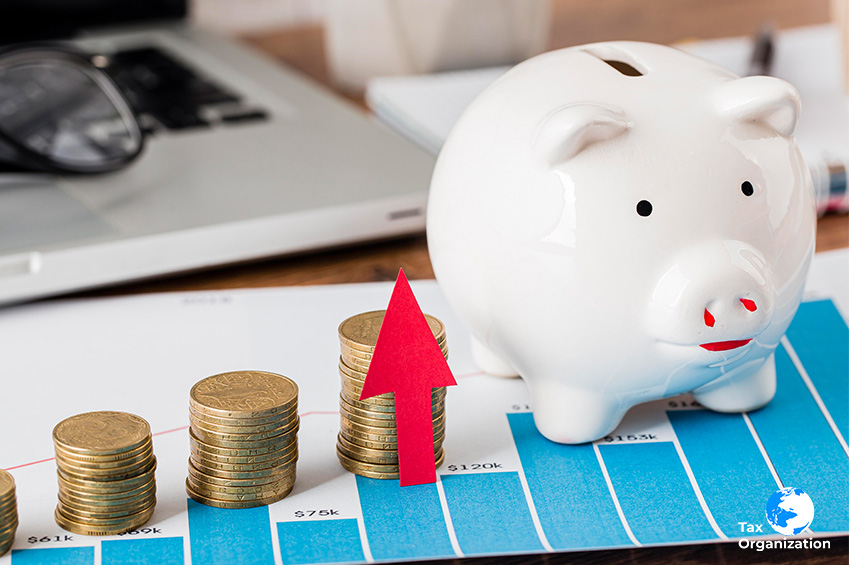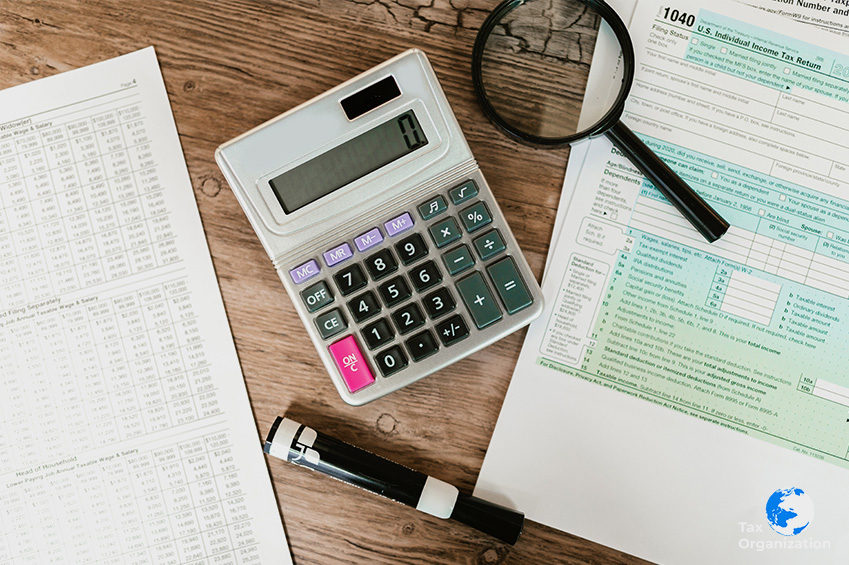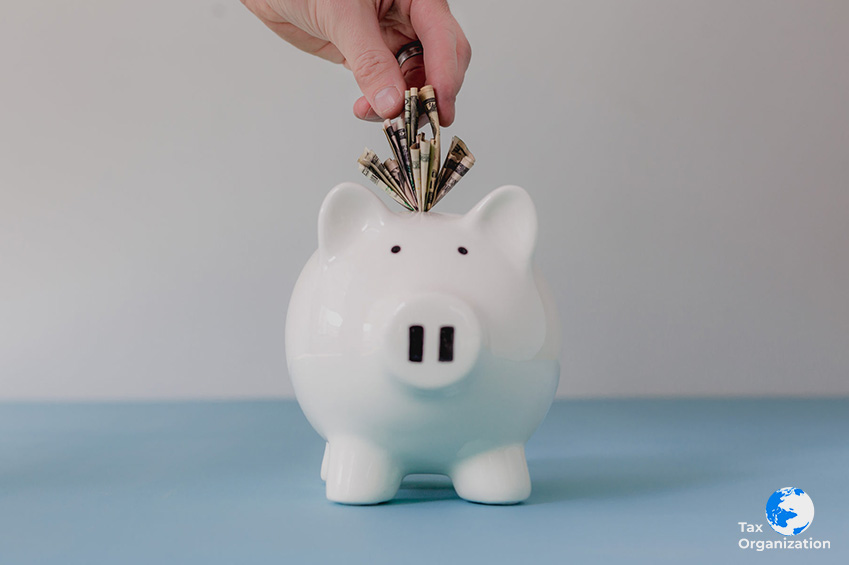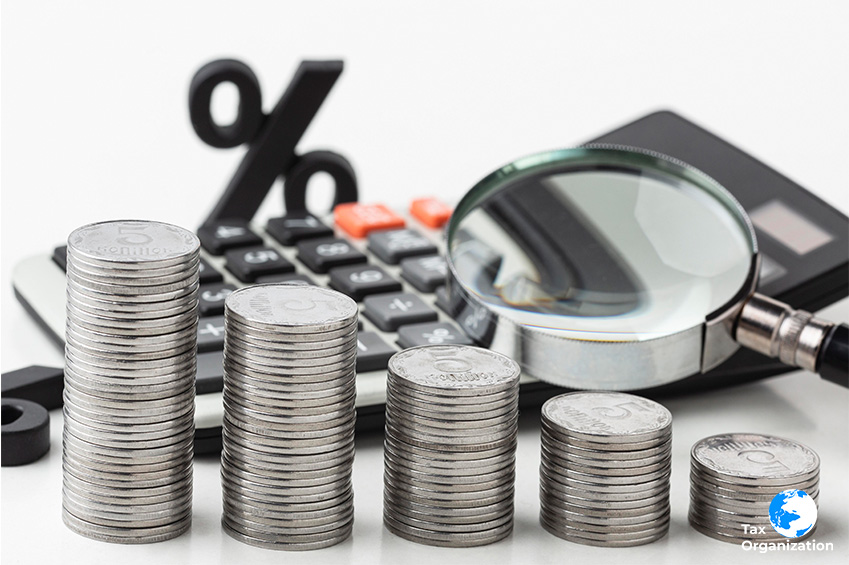High-Yield Savings Account: Grow Your Money Smarter
In today’s fast-paced world, financial stability and smart money management have become paramount. One of the key aspects of managing your finances effectively is choosing the right place to park your savings. This is where high-yield savings accounts come into play. In this article, we will delve into the intricacies of high-yield savings accounts, how they work, their benefits, and why they should be a part of your financial portfolio.
In a world of ever-increasing financial choices, it’s essential to make informed decisions about where to put your hard-earned money. High-yield savings accounts have gained popularity as a savvy way to grow your savings while keeping your funds easily accessible. Let’s explore what high-yield savings accounts are and why they are worth considering.
What is a High-Yield Savings Account?
A high-yield savings account is a type of savings account that offers a significantly higher interest rate than traditional savings accounts. These accounts are typically offered by online banks or credit unions. The “high-yield” aspect refers to the interest rate, which is often several times higher than what you would earn with a regular savings account from a brick-and-mortar bank.
Key features of a High-Yield Savings Account include:
- Higher Interest Rates: High-yield savings accounts offer an interest rate that is significantly higher than the national average for regular savings accounts. This means your money can grow faster over time.
- Safety: Like regular savings accounts, high-yield savings accounts are typically insured by government agencies, such as the Federal Deposit Insurance Corporation (FDIC) in the United States, up to a certain limit. This insurance protects your savings in case the bank goes bankrupt or faces financial difficulties.
- Liquidity: You can access your money in a high-yield savings account whenever you need it, making it a liquid and flexible option for saving.
- No Risk: High-yield savings accounts are considered low-risk because your principal (the initial amount you deposit) is secure, and you earn interest on top of it.
- No Minimum Balance: Many high-yield savings accounts have no minimum balance requirements, which means you can open one with a small amount of money.
- Online Access: Many high-yield savings accounts are offered by online banks, which means you can manage your account online or through a mobile app.
- Limited Transactions: While you can access your money when needed, high-yield savings accounts often come with restrictions on the number of withdrawals or transfers you can make per month. This is to encourage saving rather than frequent transactions.
It’s important to note that high-yield savings accounts may have varying interest rates, fees, and terms depending on the financial institution offering them. Therefore, it’s advisable to compare different options and read the terms and conditions carefully before choosing a high-yield savings account to ensure it meets your financial goals and needs.
How Do High-Yield Savings Accounts Work?
High-Yield Savings Accounts work similarly to regular savings accounts, but they offer higher interest rates, allowing your money to grow at a faster pace. Here’s how they work:

- Opening an Account: To open a High-Yield Savings Account, you typically need to choose a bank or financial institution that offers this type of account. You’ll need to provide personal information, such as your name, address, Social Security number (or equivalent), and funding source (usually a transfer from an existing bank account).
- Initial Deposit: Some High-Yield Savings Accounts require an initial deposit, while others have no minimum balance requirement. Make an initial deposit if required.
- Earning Interest: Once your account is open and funded, your money will start earning interest. The interest rate is expressed as an annual percentage yield (APY). The bank will calculate and credit interest to your account periodically, often monthly.
- Interest Compounding: High-Yield Savings Accounts usually compound interest, which means you earn interest not just on your initial deposit but also on the interest you’ve already earned. This compounding effect can significantly boost your savings over time.
- Limited Withdrawals: While you can access your money when needed, High-Yield Savings Accounts often come with restrictions on the number of withdrawals or transfers you can make each month. This limit is usually imposed to encourage saving rather than frequent transactions. Exceeding the allowed number of transactions may result in fees or the account being converted to a regular savings account.
- Safety: High-Yield Savings Accounts are typically insured by government agencies like the FDIC in the United States, which means your savings are protected up to a certain limit (e.g., $250,000 per account holder) in case the bank faces financial difficulties.
- Online Access: Many High-Yield Savings Accounts are offered by online banks, allowing you to manage your account online or through a mobile app. This convenience can make it easy to check your balance, set up automatic transfers, and monitor your savings progress.
- Fees: Be aware of any fees associated with your account, such as monthly maintenance fees or transaction fees. High-Yield Savings Accounts often have fewer fees compared to other types of accounts, but it’s essential to understand the fee structure of your specific account.
- Comparing Rates: Interest rates on High-Yield Savings Accounts can vary among different banks and financial institutions. It’s a good idea to shop around and compare rates to maximize your earnings.
In summary, High-Yield Savings Accounts are a straightforward way to save money while earning a higher interest rate than a regular savings account. They offer safety, liquidity, and the potential for your money to grow over time, making them a popular choice for emergency funds, short-term goals, or as a place to park your savings while earning a reasonable return.
Benefits of High-Yield Savings Accounts
High-Yield Savings Accounts offer several benefits that make them an attractive option for individuals looking to save and grow their money:

- Higher Interest Rates: One of the primary advantages of a High-Yield Savings Account is the higher interest rate compared to a regular savings account. This means your money can grow at a faster pace, allowing you to earn more interest over time.
- Safety: High-Yield Savings Accounts are typically offered by reputable banks and financial institutions, and they are often insured by government agencies like the FDIC in the United States. This insurance protects your savings up to a certain limit (e.g., $250,000 per account holder) in case the bank faces financial difficulties, providing peace of mind.
- Liquidity: You can access your money in a High-Yield Savings Account whenever you need it. This liquidity makes it a flexible option for saving, as you can withdraw funds without penalties or restrictions, unlike some other investment options.
- Low Risk: High-Yield Savings Accounts are considered low-risk because your principal (the initial amount you deposit) is secure, and you earn interest on top of it. There is no risk of losing your initial deposit due to market fluctuations, as can happen with investments like stocks or bonds.
- No Minimum Balance: Many High-Yield Savings Accounts have no minimum balance requirements, allowing you to open an account with a small amount of money. This makes them accessible to a wide range of savers.
- Easy Accessibility: With the rise of online banks, it’s become easier than ever to open and manage a High-Yield Savings Account online or through a mobile app. This convenience makes it simple to check your account balance, set up automatic transfers, and monitor your savings from anywhere.
- No Fees or Low Fees: High-Yield Savings Accounts typically have fewer fees compared to other financial products. While some accounts may have monthly maintenance fees or transaction fees, many are fee-free, allowing you to keep more of your earnings.
- Interest Compounding: High-Yield Savings Accounts often compound interest, meaning you earn interest on your initial deposit and on the interest you’ve already earned. This compounding effect can significantly boost your savings over time.
- Emergency Fund: High-Yield Savings Accounts are an excellent place to park your emergency fund. They offer a safe and easily accessible way to set aside money for unexpected expenses while still earning a decent return on your savings.
- Short-Term Goals: If you have short-term financial goals like saving for a vacation, a wedding, or a down payment on a home, a High-Yield Savings Account can help you reach those goals faster due to the higher interest rate.
High-Yield Savings Accounts provide a combination of safety, accessibility, and the potential for growth that makes them a valuable tool for saving money and achieving financial goals. They are especially useful for emergency funds and short-term savings objectives.
Factors to Consider When Choosing a High-Yield Savings Account
When choosing a High-Yield Savings Account, there are several important factors to consider to ensure you select an account that aligns with your financial goals and needs. Here are the key factors to take into account:

- Interest Rate (APY): The interest rate, expressed as the Annual Percentage Yield (APY), is a critical factor. Look for an account with a competitive APY as it directly impacts the amount of interest you’ll earn on your savings. Compare rates offered by different banks.
- Fees: Check for any fees associated with the account. Common fees may include monthly maintenance fees, excessive withdrawal fees, or transaction fees. Choose an account with minimal or no fees to maximize your savings.
- Minimum Balance Requirements: Determine if the account has a minimum balance requirement. Some High-Yield Savings Accounts require you to maintain a certain balance to avoid fees. If you’re looking for an account with no minimum balance, ensure the one you choose fits that criterion.
- Safety and Insurance: Verify that the bank offering the account is FDIC insured in the United States or insured by an equivalent government agency in your country. This insurance protects your savings up to a certain limit in case the bank encounters financial difficulties.
- Accessibility: Consider how easy it is to access your account. Many High-Yield Savings Accounts are offered by online banks, providing convenient online and mobile access. Ensure the bank’s digital platform meets your needs and preferences.
- Transaction Limits: High-Yield Savings Accounts often have limitations on the number of withdrawals or transfers you can make per month. Be aware of these limits and ensure they align with your intended usage of the account.
- Additional Features: Some accounts offer additional features like linked checking accounts, mobile check deposit, or ATM access. Assess whether these features are important to you and if they enhance your banking experience.
- Customer Service: Evaluate the quality of customer service provided by the bank. Good customer service can be crucial if you encounter issues or have questions about your account. Look for reviews and ratings from existing customers.
- Online Reviews and Reputation: Research the bank’s reputation and read online reviews from other account holders. This can provide insights into the bank’s reliability and customer satisfaction.
- Location and ATMs: If in-person banking and ATM access are essential to you, consider the bank’s physical branch locations and ATM network. Some online banks partner with ATM networks to offer fee-free withdrawals.
- Ease of Opening: Assess how straightforward the account opening process is. Some banks may have lengthy verification processes, while others offer a quick and easy online application.
- Promotional Offers: Keep an eye out for any promotional offers, such as sign-up bonuses or introductory interest rates. These can provide extra incentives for opening an account.
- Account Terms and Conditions: Read and understand the terms and conditions of the account, including any restrictions or penalties. Ensure you are comfortable with the account’s rules.
- Future Rate Changes: High-Yield Savings Account interest rates can fluctuate. Investigate whether the bank has a history of changing rates frequently and how they communicate these changes to customers.
By considering these factors, you can make an informed decision when choosing a High-Yield Savings Account that best suits your financial goals and preferences. It’s advisable to compare multiple options and read the fine print before opening an account.
How to Open a High-Yield Savings Account

Opening a High-Yield Savings Account is a straightforward process. Here are the general steps you can follow:
- Research and Compare: Start by researching different banks and financial institutions that offer High-Yield Savings Accounts. Compare factors such as interest rates, fees, minimum balance requirements, and account features to find the one that suits your needs.
- Choose a Bank: Once you’ve identified a bank that meets your criteria, visit their website or contact them to get more information about their High-Yield Savings Account. Make sure the bank is reputable and insured by a government agency like the FDIC (in the United States) for added security.
- Gather Required Information: Be prepared to provide personal information and documents. You will typically need:
- Your full name
- Social Security number or equivalent identification
- Contact information (address, phone number, email)
- Employment information
- Date of birth
- Citizenship status
- Open the Account Online:a. Visit the Bank’s Website: Go to the bank’s website and navigate to the High-Yield Savings Account section.b. Select “Open an Account”: Look for an option like “Open an Account” or “Apply Now” and click on it.c. Complete the Application: Fill out the online application form with your personal and financial information. Follow the instructions carefully, and double-check your entries for accuracy.d. Agree to Terms and Conditions: Review the terms and conditions of the account, including any fees and policies. Accept the terms and conditions if you agree with them.
e. Verify Your Identity: The bank may use various methods to verify your identity, such as asking security questions or requesting copies of identification documents. Follow the provided instructions to complete this step.
f. Fund Your Account: You will need to transfer money into your new High-Yield Savings Account to activate it. Most banks allow you to link an existing bank account for this purpose. Provide the necessary information to initiate the transfer.
g. Confirm Your Account: After completing the application and funding the account, you may receive a confirmation email or notification from the bank.
- Visit a Physical Branch (Optional): If you prefer in-person assistance or if the bank has physical branches, you can also open a High-Yield Savings Account by visiting a branch. Bring the required identification and documentation with you.
- Receive Account Information: Once your account is open and funded, the bank will provide you with account details, including your account number and any login information you need for online access.
- Set Up Account Management: If you opened an account with an online bank, you can typically manage your High-Yield Savings Account through their website or mobile app. If you opened the account in person at a branch, the bank will provide instructions on how to access and manage your account.
- Monitor Your Account: Regularly monitor your High-Yield Savings Account to keep track of your balance, interest earnings, and any transactions. Set up alerts or notifications to stay informed about account activity.
Remember that the specific steps and requirements may vary slightly from one bank to another, so it’s important to follow the instructions provided by the bank you choose. Always keep your account information and login credentials secure to protect your savings.
Managing Your High-Yield Savings Account
Managing your High-Yield Savings Account effectively is crucial to maximize its benefits and ensure your financial goals are met. Here are some tips on how to manage your High-Yield Savings Account:

Regularly Monitor Your Account:
Keep a close eye on your account balance and transaction history. Most banks provide online or mobile access, making it convenient to check your account regularly.
Set Up Alerts and Notifications:
Many banks offer the option to set up alerts and notifications for account activity. These alerts can help you stay informed about deposits, withdrawals, or if your account balance falls below a certain threshold.
Automate Savings:
Set up automatic transfers from your checking account to your High-Yield Savings Account. Automating savings ensures that you consistently contribute to your savings without having to think about it.
Review Statements:
Periodically review your account statements, which summarize your account activity for a specific period. This allows you to identify any errors or discrepancies and track your progress toward your savings goals.
Maximize Contributions:
Consider increasing your savings contributions whenever you have additional funds available. This can accelerate your savings growth and take advantage of the higher interest rate.
Keep Emergency Funds Accessible:
If you’re using your High-Yield Savings Account as an emergency fund, make sure the funds are easily accessible when needed. Ensure you can quickly transfer money to your checking account or withdraw cash without penalties.
Be Aware of Transaction Limits:
High-Yield Savings Accounts often have restrictions on the number of withdrawals or transfers you can make per month. Stay within these limits to avoid fees or account conversion to a regular savings account.
Consider Multiple Accounts:
Depending on your financial goals, you might consider opening multiple High-Yield Savings Accounts for different purposes, such as one for emergencies and another for short-term goals.
Regularly Update Beneficiaries:
If you have named beneficiaries for your account, review and update them as needed, especially after significant life events like marriage, divorce, or the birth of a child.
Track Interest Earnings:
Keep track of the interest you’re earning on your savings. The compounding effect can substantially increase your balance over time.
Review Account Terms:
Periodically review the terms and conditions of your High-Yield Savings Account. Banks may change fees, interest rates, or other account terms, and it’s essential to stay informed.
Consider Future Rate Changes:
Be aware that interest rates on High-Yield Savings Accounts can fluctuate. Stay informed about changes in rates and evaluate whether your current account remains competitive.
Evaluate Account Performance:
Compare the performance of your High-Yield Savings Account with other savings or investment options to ensure it continues to meet your financial goals.
Secure Account Information:
Keep your account information, login credentials, and personal identification secure to prevent unauthorized access and protect your savings.
By following these management tips, you can make the most of your High-Yield Savings Account and use it as an effective tool for saving and achieving your financial objectives.
Are High-Yield Savings Accounts Safe?
Yes, High-Yield Savings Accounts are generally considered safe, particularly when they are offered by reputable banks and financial institutions. Here’s why they are considered safe:

- FDIC or Equivalent Insurance: In the United States, High-Yield Savings Accounts are often insured by the Federal Deposit Insurance Corporation (FDIC) or an equivalent government agency in other countries. This insurance provides protection for your savings, up to a certain limit (e.g., $250,000 per account holder in the U.S.), in case the bank becomes insolvent or faces financial difficulties. This means that even if the bank experiences problems, you should get your insured funds back.
- Low Risk: High-Yield Savings Accounts are low-risk financial products. Unlike investments in stocks or bonds, where you could potentially lose money due to market fluctuations, the principal amount you deposit into a High-Yield Savings Account is typically secure. You earn interest on top of your initial deposit, and that interest is generally guaranteed.
- Regulation: Banks offering High-Yield Savings Accounts are subject to strict regulatory oversight by government authorities. These regulations are in place to ensure the safety and soundness of financial institutions, which helps mitigate the risk of financial mismanagement.
- Liquidity: High-Yield Savings Accounts offer liquidity, meaning you can access your money quickly and easily when needed. This makes them a safe choice for keeping an emergency fund or funds for short-term goals, as you can readily withdraw or transfer your funds without penalties.
- Transparency: Reputable banks provide clear terms and conditions for their High-Yield Savings Accounts. This transparency allows you to understand the fees, interest rates, and account features, reducing the risk of unexpected surprises.
While High-Yield Savings Accounts are generally safe, it’s essential to do your due diligence when choosing a bank and account. Ensure that the bank is FDIC-insured (or insured by the equivalent agency in your country) and has a solid reputation. Additionally, read and understand the terms and conditions of the account, including any fees or restrictions, to make sure the account aligns with your financial goals.
Keep in mind that while High-Yield Savings Accounts offer safety and liquidity, they may not provide the same potential for high returns as riskier investments. They are primarily designed for preserving and growing your savings in a secure manner.
Tax Implications of High-Yield Savings Accounts
High-Yield Savings Accounts have certain tax implications that you should be aware of:

- Interest Income: The interest you earn on a High-Yield Savings Account is considered taxable income by the government. This means that you are required to report the interest you earn on your annual income tax return.
- 1099-INT Form: If you earn more than a certain amount of interest in a year (typically $10 or more in the United States), the bank where you hold your High-Yield Savings Account will issue you a 1099-INT form. This form reports the amount of interest income you received during the tax year, and you must include this information when you file your taxes.
- Tax Bracket: The amount of tax you owe on the interest income depends on your tax bracket. The interest is added to your total taxable income, and you are taxed at your applicable income tax rate.
- Form of Taxation: Interest income from a High-Yield Savings Account is generally subject to ordinary income tax rates. It is not typically taxed at a lower capital gains tax rate, as might be the case with some investments.
- State Taxes: In addition to federal income tax, you may also be subject to state income tax on your interest earnings. State tax rates and rules vary, so it’s essential to check the regulations in your specific state.
- Tax Reporting: When you prepare your income tax return, you will need to report the interest income from your High-Yield Savings Account. You will likely find a section on the tax form dedicated to interest and dividend income.
- Withholding: Some banks may withhold a portion of the interest income for federal taxes, especially if you haven’t provided them with your tax identification number or if you’re subject to backup withholding due to certain circumstances. You can usually claim this withholding as a credit when you file your tax return.
- Tax-Advantaged Accounts: If you want to minimize the tax impact of your savings, you might consider using tax-advantaged accounts like a Roth IRA (for retirement savings) or a 529 plan (for education savings). These accounts offer potential tax benefits on qualified withdrawals.
- Tax Planning: Consult with a tax professional or financial advisor to understand the specific tax implications of your High-Yield Savings Account in your particular financial situation. They can help you develop a tax-efficient savings strategy.
It’s important to keep accurate records of your interest income and any related tax documents to ensure you comply with tax laws and report your income accurately. Failing to report interest income on your tax return can lead to penalties and interest charges. Remember that tax laws can change, so staying informed about the latest regulations is essential for proper tax planning and compliance.
Comparing High-Yield Savings Accounts with Other Savings Options
Comparing High-Yield Savings Accounts with other savings options is essential to determine which one aligns best with your financial goals and needs. Here’s a comparison of High-Yield Savings Accounts with some other common savings options:

- High-Yield Savings Accounts vs. Regular Savings Accounts:
- High-Yield Savings Accounts typically offer significantly higher interest rates than regular savings accounts. This means you can earn more money on your savings with a High-Yield account.
- Regular savings accounts may have lower or no minimum balance requirements, making them more accessible for those who can’t meet the minimums of High-Yield accounts.
- High-Yield Savings Accounts are generally a better choice for growing your savings due to their higher interest rates, while regular savings accounts are better suited for those who need quick access to their money without worrying about fees.
- High-Yield Savings Accounts vs. Certificates of Deposit (CDs):
- High-Yield Savings Accounts provide liquidity, allowing you to access your money at any time. In contrast, CDs lock in your funds for a specified term, which can range from months to years, with a penalty for early withdrawal.
- CDs often offer higher interest rates than regular savings accounts but usually lower rates than High-Yield Savings Accounts.
- If you need flexibility and easy access to your savings, High-Yield Savings Accounts are more suitable. CDs are ideal for those who can commit to leaving their money untouched for a set period to earn a slightly higher interest rate.
- High-Yield Savings Accounts vs. Money Market Accounts (MMAs):
- Money Market Accounts are similar to High-Yield Savings Accounts in that they offer competitive interest rates and liquidity. However, MMAs may offer check-writing and debit card features, making it easier to access funds.
- High-Yield Savings Accounts often have lower fees and may offer a slightly higher interest rate than MMAs.
- The choice between the two may depend on your preference for account features and how you plan to access your savings.
- High-Yield Savings Accounts vs. Investing in Stocks or Bonds:
- High-Yield Savings Accounts are low-risk and provide safety of principal, making them suitable for preserving savings. They offer modest but guaranteed returns.
- Investing in stocks or bonds carries higher risk and the potential for higher returns, but there is also a risk of losing money due to market volatility.
- High-Yield Savings Accounts are ideal for emergency funds, short-term goals, or a secure place to park cash. Investing in stocks or bonds is better suited for long-term wealth-building but comes with higher risk and volatility.
- High-Yield Savings Accounts vs. Retirement Accounts (e.g., 401(k) or IRA):
- Retirement accounts offer tax advantages and are designed for long-term retirement savings. Contributions to these accounts are subject to annual limits.
- High-Yield Savings Accounts are better for short-term goals, emergency funds, and funds you may need to access before retirement age.
- It’s generally recommended to prioritize retirement accounts for long-term financial security while using High-Yield Savings Accounts for more immediate financial needs.
In summary, High-Yield Savings Accounts provide a balance between safety, liquidity, and modest growth. They are a suitable choice for emergency funds, short-term goals, and accessible savings. However, for long-term wealth accumulation and retirement planning, other investment options may be more appropriate, depending on your risk tolerance and financial objectives.
Strategies for Maximizing Your High-Yield Savings
Maximizing the growth of your savings in a High-Yield Savings Account requires a strategic approach. Here are some effective strategies to make the most of your High-Yield Savings:

- Choose the Right Account: Start by selecting a High-Yield Savings Account with a competitive interest rate (APY) and minimal fees. Compare offers from different banks to find the best option.
- Automate Your Savings: Set up automatic transfers from your checking account to your High-Yield Savings Account. This ensures consistent contributions and takes advantage of dollar-cost averaging, especially if you’re saving for a specific goal.
- Leverage Paycheck Deductions: If your employer offers direct deposit, consider having a portion of your paycheck automatically deposited into your High-Yield Savings Account. This “pay yourself first” approach makes saving a priority.
- Increase Contributions: Whenever you receive windfalls like tax refunds, bonuses, or unexpected income, consider redirecting a portion of these funds into your High-Yield Savings Account to boost your savings.
- Set Clear Goals: Establish specific savings goals, whether it’s an emergency fund, a vacation, a down payment on a house, or something else. Having clear objectives helps you stay motivated and focused.
- Emergency Fund: Prioritize building or replenishing your emergency fund in your High-Yield Savings Account. Aim to save three to six months’ worth of living expenses to cover unexpected financial setbacks.
- Consolidate Accounts: If you have multiple savings accounts with small balances, consider consolidating them into your High-Yield Savings Account. This can simplify your finances and maximize interest earnings.
- Regularly Review and Adjust: Periodically review your budget and savings plan to ensure you’re on track to meet your goals. Adjust your contributions as needed, especially if your financial situation changes.
- Avoid Frequent Withdrawals: Limit withdrawals from your High-Yield Savings Account to essential expenses and emergencies. Frequent withdrawals can hinder your savings growth, especially if your account has transaction limits or fees.
- Reinvest Interest: Choose an account that allows you to reinvest your earned interest. This means the interest you earn becomes part of your principal, leading to compounding growth over time.
- Stay Informed: Keep an eye on changes in interest rates. If your bank reduces the rate significantly, consider moving your funds to a different High-Yield Savings Account with a better rate.
- Refinance High-Interest Debts: If you have high-interest debts, such as credit card balances, consider using your High-Yield Savings Account to pay them off. The interest saved on debt can outweigh the interest earned in the account.
- Avoid Impulse Spending: Practice disciplined spending and avoid impulsive purchases. This leaves more funds available for saving and investing in your High-Yield Savings Account.
- Diversify Your Savings: While High-Yield Savings Accounts offer safety and liquidity, explore other investment options like retirement accounts or taxable investment accounts for long-term wealth-building.
- Stay Patient and Persistent: Building significant savings takes time. Stay patient, stay committed to your savings goals, and don’t get discouraged by short-term fluctuations in interest rates or economic conditions.
By implementing these strategies and maintaining a disciplined savings routine, you can maximize the growth of your savings in a High-Yield Savings Account and work toward achieving your financial objectives.
Common Myths about High-Yield Savings Accounts
High-Yield Savings Accounts are a popular savings option, but there are several myths and misconceptions surrounding them. Let’s debunk some common myths:

- Myth: High-Yield Savings Accounts Are Only for the Wealthy
- Fact: High-Yield Savings Accounts are accessible to individuals with various income levels. Many of them have low or no minimum balance requirements, making them available to a wide range of savers.
- Myth: High-Yield Savings Accounts Are Risky
- Fact: High-Yield Savings Accounts are low-risk financial products. They are insured by government agencies like the FDIC in the United States, providing protection for your savings up to certain limits. Your principal is secure, and you earn interest on top of it.
- Myth: You Need to Lock in Your Money for a Fixed Term
- Fact: Unlike Certificates of Deposit (CDs), High-Yield Savings Accounts do not require you to lock in your money for a fixed term. You can access your funds at any time without penalties, making them more liquid and flexible.
- Myth: All High-Yield Savings Accounts Offer the Same Interest Rate
- Fact: Interest rates on High-Yield Savings Accounts can vary significantly among different banks and financial institutions. It’s essential to compare rates and choose an account with a competitive interest rate.
- Myth: You Can’t Access Your Money Quickly
- Fact: High-Yield Savings Accounts provide quick and easy access to your money. You can typically withdraw funds through online banking, ATMs, or in-person at a branch if the bank has physical locations.
- Myth: You Can’t Have Multiple High-Yield Savings Accounts
- Fact: You can open and maintain multiple High-Yield Savings Accounts, each serving different purposes or goals. This allows you to diversify your savings or take advantage of different interest rates.
- Myth: High-Yield Savings Accounts Don’t Offer Tax Benefits
- Fact: While High-Yield Savings Accounts are subject to income tax on the interest you earn, they can still provide a tax-advantaged way to save compared to taxable investment accounts. Additionally, some states offer tax deductions for contributions to specific types of savings accounts.
- Myth: High-Yield Savings Accounts Are Only for Short-Term Goals
- Fact: While High-Yield Savings Accounts are suitable for short-term goals and emergency funds, they can also be part of a diversified savings strategy for long-term objectives, especially for those seeking safety and liquidity.
- Myth: High-Yield Savings Accounts Are Not Worth It Because of Low Rates
- Fact: While interest rates on High-Yield Savings Accounts are generally lower than historical averages, they still offer a better return than most regular savings accounts. They provide a safe place to park your cash while earning some interest.
- Myth: Opening a High-Yield Savings Account Is Complicated
- Fact: Opening a High-Yield Savings Account is a straightforward process. Many banks offer online applications, and you can usually complete the process in a matter of minutes.
By dispelling these myths, you can make more informed decisions about whether a High-Yield Savings Account aligns with your financial goals and needs. High-Yield Savings Accounts remain a valuable option for saving and preserving your money while earning a competitive interest rate.
High-Yield Savings Account vs. Traditional Savings Account
High-Yield Savings Accounts and Traditional Savings Accounts are both types of savings accounts, but they have some key differences. Here’s a comparison:

High-Yield Savings Account:
- Interest Rates: High-Yield Savings Accounts offer significantly higher interest rates (APY) compared to Traditional Savings Accounts. These rates can vary but are generally well above the national average for regular savings accounts.
- Earnings Potential: Due to the higher interest rates, High-Yield Savings Accounts allow your money to grow at a faster pace. You can earn more interest over time, which can be especially beneficial for reaching your savings goals or building an emergency fund.
- Safety: High-Yield Savings Accounts are typically offered by established banks and are often insured by government agencies like the FDIC in the United States. This insurance protects your savings up to certain limits, providing security for your funds.
- Minimum Balance: Some High-Yield Savings Accounts may have minimum balance requirements, but many also offer accounts with no minimum balance, making them accessible to a wide range of savers.
- Fees: High-Yield Savings Accounts generally have fewer fees compared to Traditional Savings Accounts, especially if you choose an account with no monthly maintenance fees.
- Liquidity: You can access your money in a High-Yield Savings Account whenever you need it. This liquidity makes it a flexible option for saving while still earning a competitive interest rate.
Traditional Savings Account:
- Interest Rates: Traditional Savings Accounts typically offer lower interest rates compared to High-Yield Savings Accounts. These rates are often closer to the national average for savings accounts.
- Earnings Potential: While Traditional Savings Accounts provide a safe place to save money, their lower interest rates mean that your money will grow more slowly compared to a High-Yield account.
- Safety: Like High-Yield Savings Accounts, Traditional Savings Accounts are generally considered safe because they are often insured by government agencies, protecting your savings up to certain limits.
- Minimum Balance: Many Traditional Savings Accounts have no minimum balance requirements, making them accessible for individuals with varying financial situations.
- Fees: Some Traditional Savings Accounts may have monthly maintenance fees, although they are often lower than fees associated with checking accounts. However, it’s possible to find Traditional Savings Accounts with no fees.
- Liquidity: Traditional Savings Accounts also offer liquidity, allowing you to withdraw your funds as needed. They are suitable for both short-term and long-term saving goals.
In summary, the primary difference between a High-Yield Savings Account and a Traditional Savings Account is the interest rate. High-Yield Savings Accounts provide a higher interest rate, which can significantly increase your earnings over time. Traditional Savings Accounts, on the other hand, offer safety and liquidity but with lower earnings potential. The choice between the two depends on your financial goals, risk tolerance, and the importance of earning a competitive interest rate on your savings.
High-Yield Savings Accounts: The Future of Saving
As financial technology continues to evolve, high-yield savings accounts are poised to play a more significant role in helping people save and grow their money.

High-Yield Savings Accounts have become an increasingly significant part of the financial landscape and are poised to play a pivotal role in the future of saving. Here’s how these accounts are shaping the future of personal finance:
- Competitive Interest Rates: High-Yield Savings Accounts offer interest rates that are notably higher than those of traditional savings accounts. As the future unfolds, this competitive advantage is likely to persist. Savers can continue to earn more on their deposits, making it an attractive option for growing wealth over time.
- Safety and Security: These accounts are typically offered by well-established banks and financial institutions, often backed by government insurance, such as the FDIC in the United States. This safety and security aspect is a crucial factor in attracting savers, especially those seeking to protect their hard-earned money.
- Accessibility and Convenience: High-Yield Savings Accounts are becoming more accessible than ever before. With the growth of online banking, savers can easily open and manage accounts from the comfort of their homes. This trend towards convenience is likely to continue, making it easier for people to save and manage their finances.
- Liquidity and Flexibility: These accounts offer liquidity, allowing savers to access their funds quickly and without penalties. As financial needs evolve in the future, having readily available cash through High-Yield Savings Accounts will remain important for emergencies and short-term goals.
- Personal Finance Integration: High-Yield Savings Accounts can be integrated into broader personal finance strategies. They can serve as the foundation for emergency funds, housing savings for down payments, or even as a part of retirement planning. Savers can utilize these accounts as versatile tools within their financial portfolios.
- Education and Financial Literacy: The prominence of High-Yield Savings Accounts can contribute to increased financial literacy. Savers are becoming more aware of the importance of saving and the role of interest rates in growing their wealth. This education can empower individuals to make informed financial decisions.
- Competition and Innovation: The demand for High-Yield Savings Accounts has spurred competition among banks. This competition is likely to drive further innovation, leading to more attractive features, lower fees, and better customer experiences for savers.
- Integration with Fintech: Fintech companies are entering the savings account space, offering digital solutions that seamlessly integrate High-Yield Savings Accounts with budgeting and investment tools. This integration can enhance the overall financial management experience.
- Diversification of Saving Strategies: Savers are recognizing the importance of diversifying their saving strategies. High-Yield Savings Accounts offer a low-risk, stable component of these strategies, complementing riskier investment options.
- Response to Economic Conditions: High-Yield Savings Accounts can act as a safe haven during economic uncertainty. In times of market volatility or economic downturns, individuals may prioritize the stability and security of these accounts.
In conclusion, High-Yield Savings Accounts are well-positioned to remain a central element of personal finance in the future. Their competitive interest rates, safety features, accessibility, and role in diversified saving strategies make them a valuable tool for individuals and families striving to achieve their financial goals.
Conclusion
In a world where financial security and smart money management are paramount, high-yield savings accounts offer a practical solution. With higher interest rates, easy accessibility, and safety features, they provide a reliable way to grow your savings. Consider incorporating a high-yield savings account into your financial strategy to secure a brighter financial future.
FAQs
1. How does a high-yield savings account differ from a regular savings account?
A high-yield savings account offers a significantly higher interest rate, allowing your money to grow faster than with a traditional savings account.
2. Are high-yield savings accounts risk-free?
While no investment is entirely without risk, high-yield savings accounts are typically considered safe, especially when they are FDIC or NCUA insured.
3. Can I access my money easily with a high-yield savings account?
Yes, high-yield savings accounts are designed for easy access to your funds when you need them.
4. Are the interest earnings from a high-yield savings account taxable?
Yes, interest earned from a high-yield savings account is generally taxable income.
5. What should I consider when choosing a high-yield savings account?
When selecting a high-yield savings account, consider factors like the interest rate, minimum balance requirements, fees, and the reputation of the financial institution.
In this fast-paced financial world, making the right choices for your money is crucial. High-yield savings accounts provide an excellent opportunity to grow your savings efficiently while maintaining accessibility. So, don’t wait any longer; start exploring the world of high-yield savings accounts and secure your financial future today.





